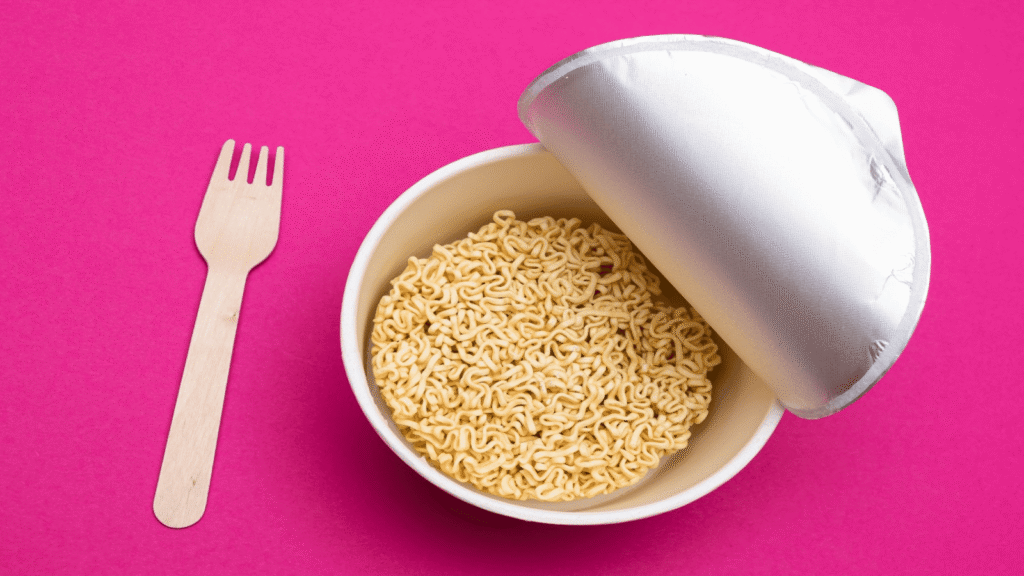A steaming cup of noodles is more than just food—it’s a well‑designed packaging system that keeps it fresh, hot, and appealing from the production line to your hands.
Custom printed noodle cups1 with aluminum lids2 use thick food‑grade paperboard, high‑quality printing, and a PET/AL/PE composite seal to ensure heat resistance3, leak‑proofing, and long shelf life, while showcasing the brand.
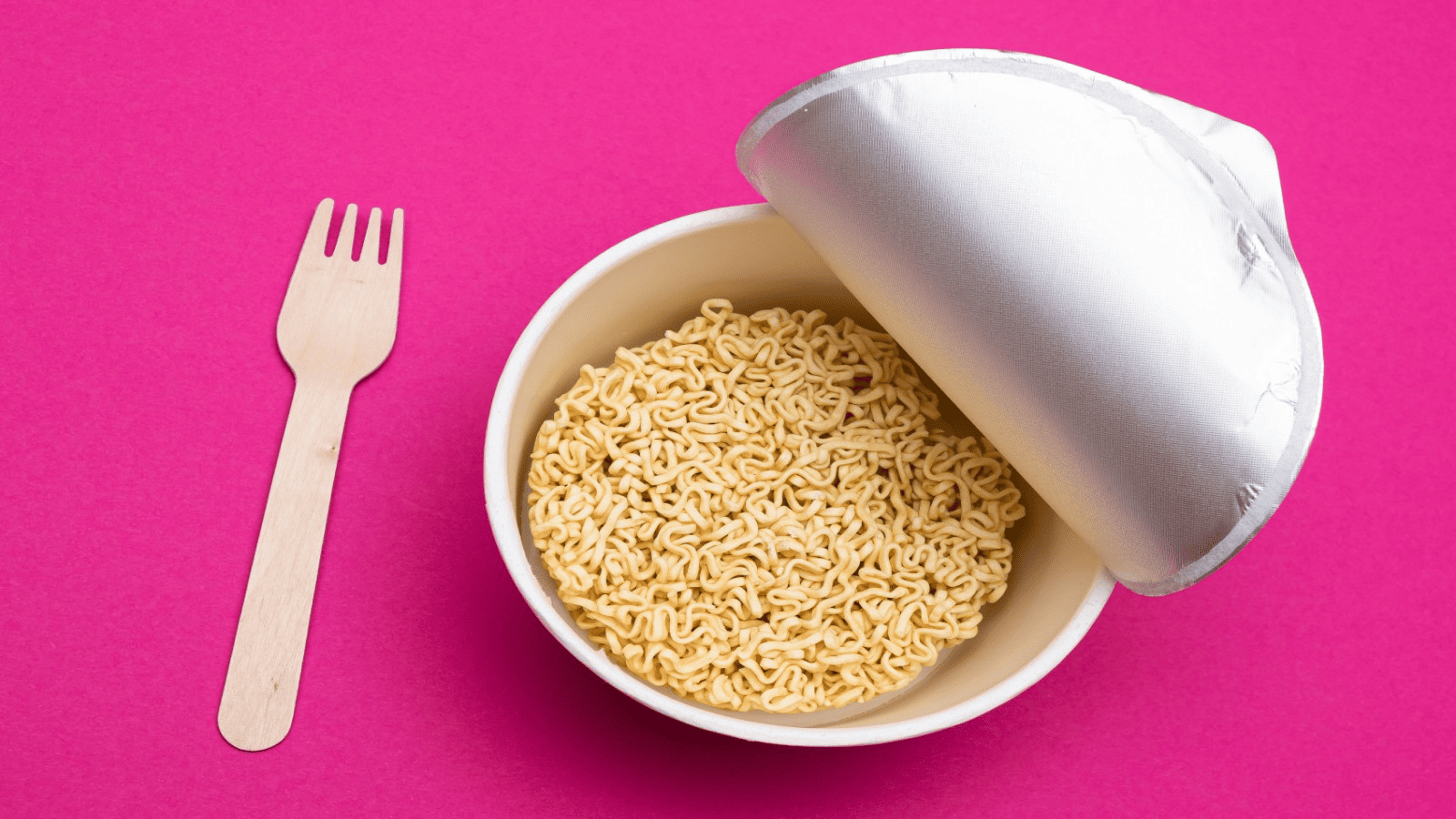
I’ve helped brands upgrade to aluminum‑sealed noodle cups, and I’ve seen how this instantly improves both premium feel and practical performance.
How to make your own cup of noodles?
Building your own cup of noodles is not just about recipes—it’s about choosing safe, heat‑resistant, and brandable packaging.
You need food‑grade paper cups (PE, water‑based, or PLA coated), a matching aluminum lid, and sealing equipment for airtight closure; then fill with noodles, toppings, and seasonings.
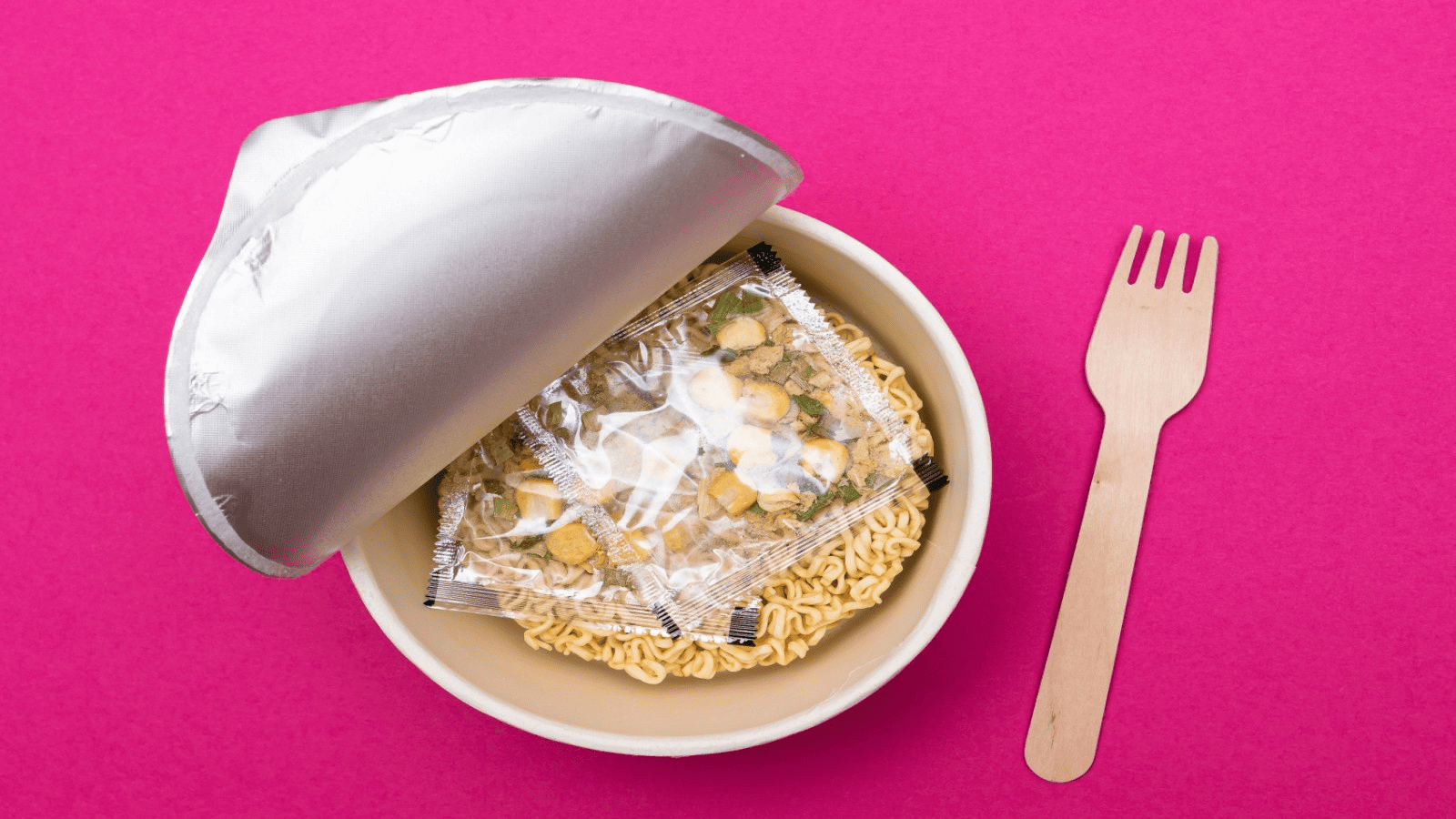
In my work, we start with coated board around 350–370 g/m², select printing finishes for branding, and then match aluminum lids2 with the right lamination for sealing speed and oxygen protection.
Steps for Producing a Custom Noodle Cup
| Step | Details |
|---|---|
| Cup selection | Heat‑resistant, correct volume (500–750 ml) |
| Printing | Offset or flexo with food‑safe inks |
| Lid choice | PET/Al/PE composite, easy‑tear design |
| Filling | Pre‑cooked noodles, dried toppings, seasoning |
| Sealing | Heat seal with calibrated pressure/time |
| Testing | Leak, heat, and shelf‑life performance checks |
Are paper cup noodles microwavable?
Many customers ask if they can skip the kettle and microwave directly.
Most instant noodle cups are not microwave‑safe because their coatings or lids may deform or release unsafe compounds under direct microwave heating.
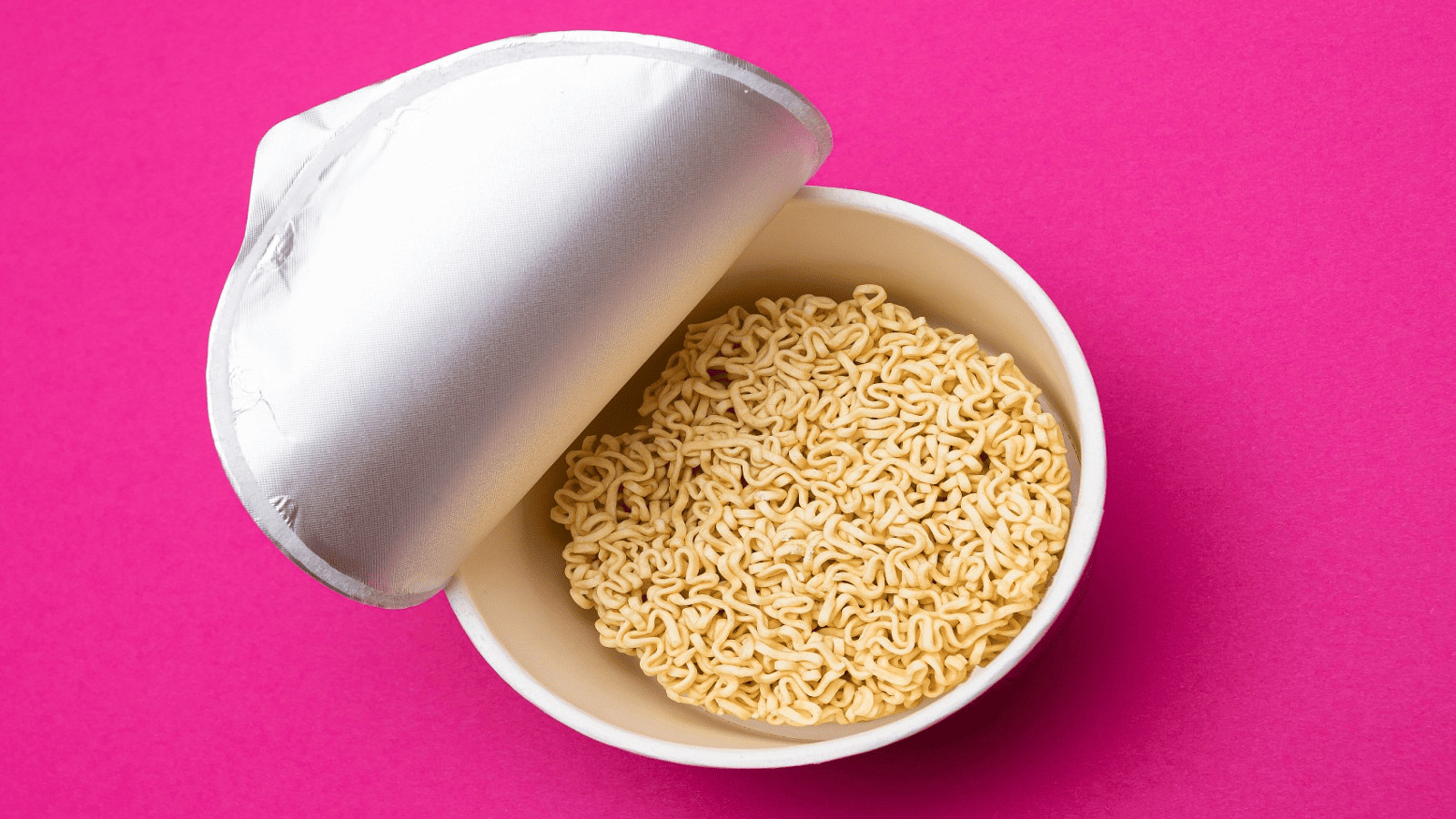
The aluminum lids2 on certain cups also pose a fire risk in microwaves. I always advise clients to print clear “do not microwave” instructions when safety risks exist.
Microwave Safety Facts
- PE coatings can warp under uneven microwave heating.
- PLA coatings have low heat resistance3 (<85℃) and can deform.
- Aluminum lids cause sparks inside microwaves.
How to eat Cup Noodles with a lid?
Lids are part of the convenience—they help steep the noodles and keep them hot.
To eat, peel back the aluminum lid partway, pour boiling water to the fill line, reseal lightly, and open fully after the recommended time to enjoy.
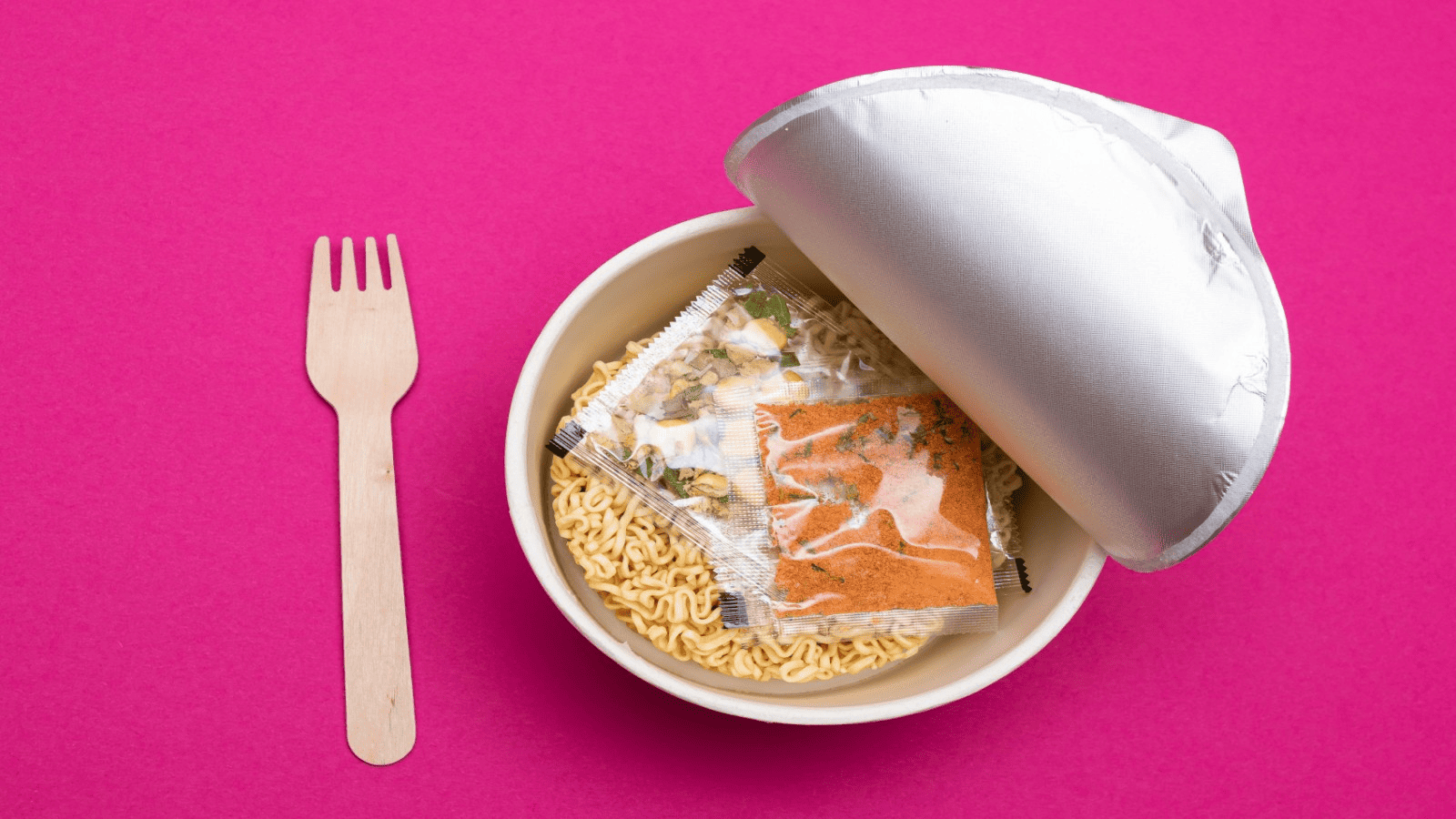
Many designs have easy‑tear grooves so you can peel smoothly without sharp edges. I’ve worked with brands to adjust tear strength so customers can open without spills.
Lid Functions
- Seals for freshness and shelf life.
- Allows partial opening to steep noodles.
- Easy peel for safe, quick serving.
Why does it say not to microwave a cup of noodles?
Those warnings are not random—they come from safety testing.
Instant noodle cups are designed for hot water rehydration4, not in‑microwave cooking; coatings and aluminum lids2 can cause safety hazards and affect food quality under microwave conditions.
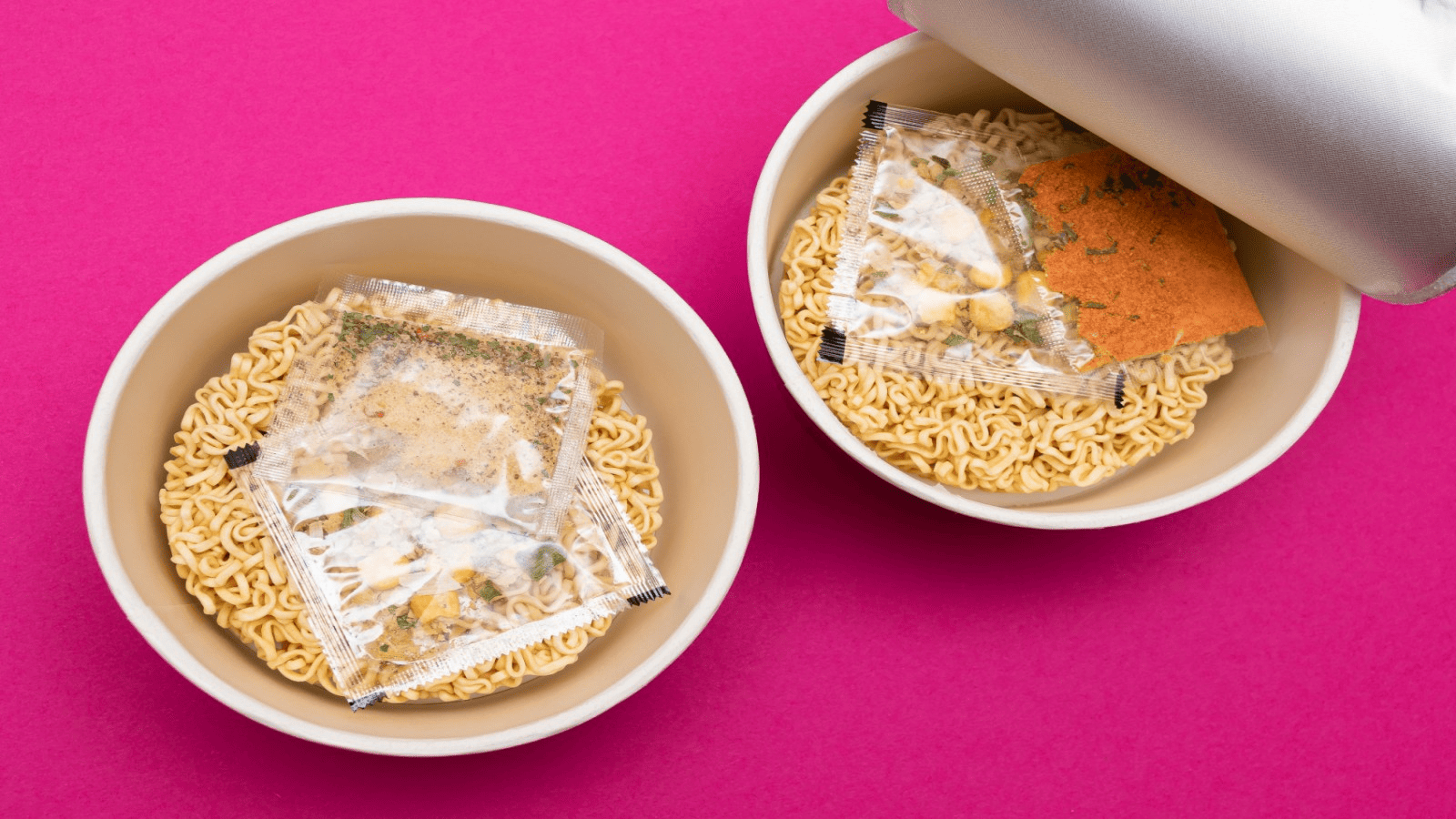
During my trials, putting an aluminum‑sealed cup in a microwave caused visible sparks, and cups with PE lining warped unevenly, risking leaks and burns.
Common Risks in Microwaving
| Issue | Cause |
|---|---|
| Sparking | Aluminum layer reflects microwave energy |
| Cup deformation | Uneven heating of coating and board |
| Off‑flavors | Overheating of inner coating |
| Burns/spills | Weakening of cup wall and seams |
Conclusion
Custom printed noodle cups1 with aluminum lids2 deliver both premium branding and practical benefits, but they are meant for hot water steeping, not microwaving—ensuring safety, performance, and strong shelf appeal.
Explore the advantages of custom printed noodle cups for branding and packaging efficiency. ↩
Learn about the benefits of aluminum lids in maintaining freshness and safety for noodle cups. ↩
Understand how heat resistance is crucial for maintaining food quality and safety. ↩
Discover the process of hot water rehydration and its importance for instant noodles. ↩
